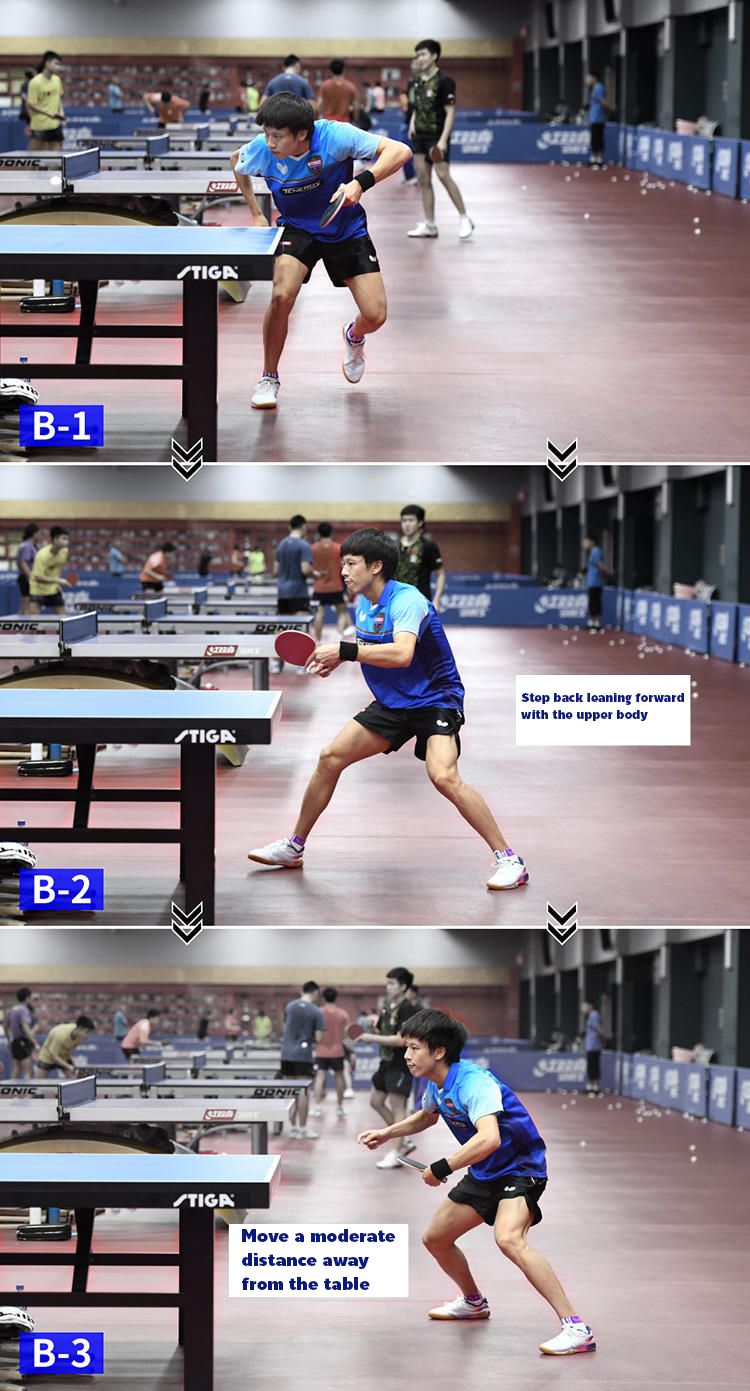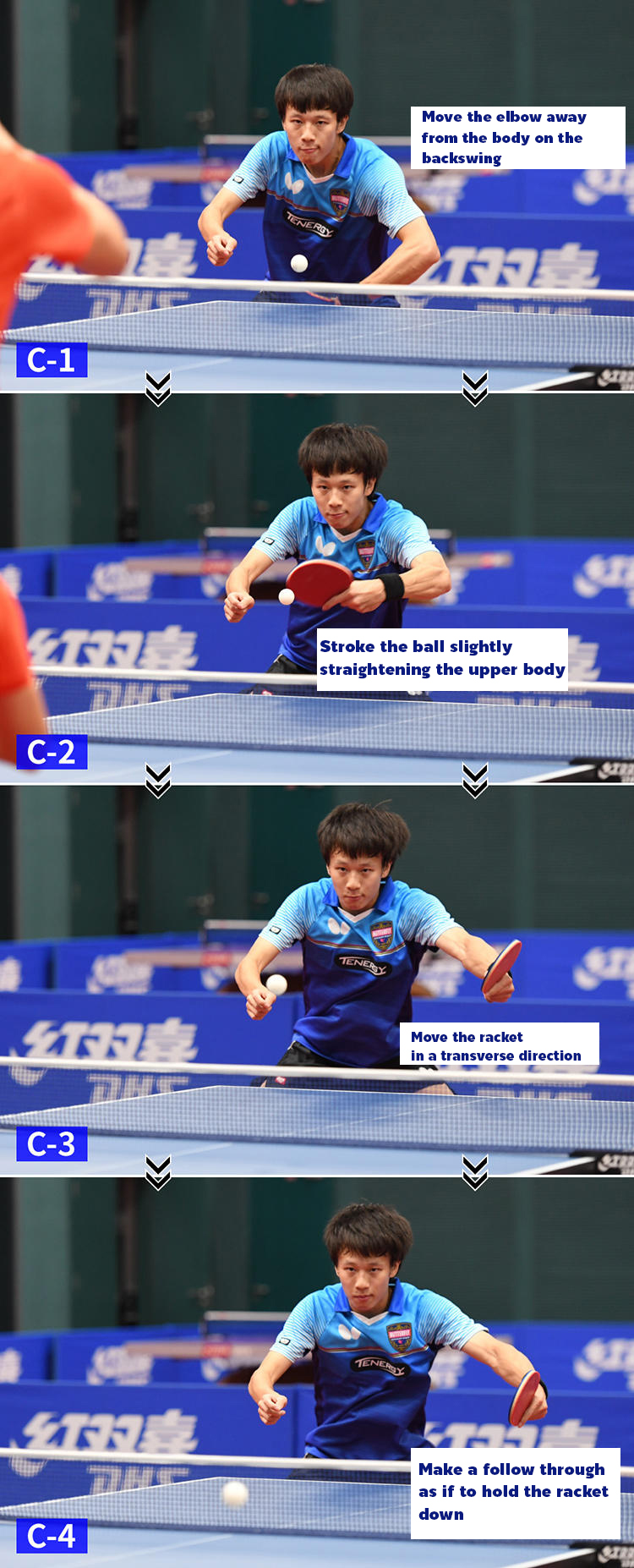Special Programme
Technique of Lin Gaoyuan, a fast attacking left hander
– Backhand counter attacking play close to the table
with the best precision in the world-
Lin Gaoyuan, an exciting Chinese left hander,
is climbing the world ranking ladder with his highly stable counter
top spin play close to the table.
This special programme introduces Lin Gaoyuan’s techniques
with some sequence images taken at a Chinese national team training camp.
The second edition we will focus on his backhand counter attacking
play against topspin play close to the table.
Backhand counter attacking topspin used to be a highly problematic technique
before the introduction of plastic ball. However, more and more players are aggressively
introducing the backhand counter topspin because the spin factor of the plastic ball is less.
Among them, the precision of Lin Gaoyuan’s backhand counter attacking
play close to the table is far above the level of others
and it is for sure one of his flagship techniques.
Point 1: Force the opponent’s topspin to be returned to the backhand.

Lin Gaoyuan’s backhand counter attacking
play close to the table has the world’s best precision.
The accuracy is enabled not only thanks to his fine technique
but at the same time he “forces the opponent to stroke a topspin to his backhand side.”
Let us look at one good example.
The photos A-1 to A-5 show his forehand sidespin service
which he often uses and then attacks the third ball
with his backhand counter topspin close to the table.
With this service the ball curves enough to drift out of the table
over the sideline of the forehand side for a right-handed player.
In addition, the service length is tactically calculated
and it is difficult for the opponent to judge if the ball will bounce once or twice on the table.
Therefore, the opponent is forced to make a topspin stroke
when the ball returns after bouncing once on the table.
However, he has no other choice but to return
to Lin Gaoyuan’s backhand because of the accurate ball placement.
It is his favourite scoring pattern.
He awaits the topspin receive to execute the backhand counter topspin.
Additionally, he is good at succeeding with his backhand counter
topspin close to the table on the fourth ball,
by receiving short with similar ball placement.
It is difficult to succeed with the backhand counter topspin,
anticipation is needed; this is no exception for Lin Gaoyuan.
Please note that Lin Gaoyuan’s highly precise backhand
counter topspin close to the table is made possible by inducing
the opponent to return a top spin to his backhand side.
Point 2: Move a certain distance away from the table and await the topspin stroke.

Lin Gaoyuan succeeds with the backhand counter topspin
close to the table by moving a certain distance away from the table quickly;
the movement comes after making the stroke to induce
the opponent to direct a top spin towards his backhand (Photo B-3).
For the backhand counter attacking play close to the table,
you are likely to rush against the opponent’s topspin;
you cannot move your racket as you wish if you are too close to the table
when you await the ball.
You have enough time for preparation as well as enough space
to move your racket if you stand a certain distance away from the table,
just like Lin Gaoyuan.
Be careful not to straight your upper body and quickly step back
when you leave space between you and the table.
Point 3: Move the racket laterally, a moderate distance from the ball and finish the movement downwards to control the spin on the incoming ball.












